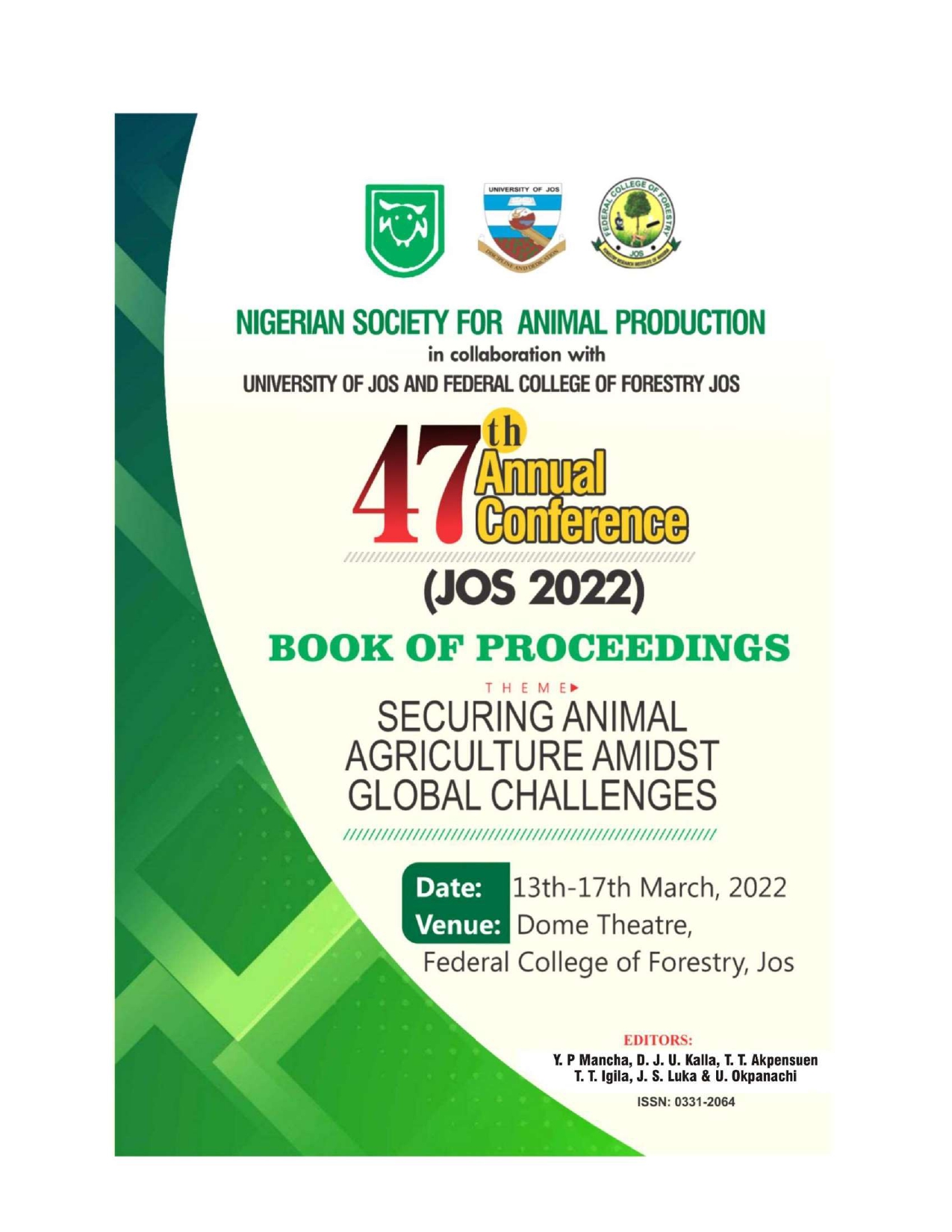HERITABILITY AND REPEATABILITY ESTIMATES OF EGG QUALITY TRAITS IN JAPANESE QUAILS RAISED IN NORTHEASTERN NIGERIA
DOI:
https://doi.org/10.51791/njap.vi.4245Keywords:
Heritability, Repeatability, Japanese quail, Egg quality traits, NortheastAbstract
Heritability and repeatability were estimated for egg quality traits in Japanese quails reared in Maiduguri Northeast Nigeria using Restricted Maximum Likelihood (REML) Procedures. The egg quality traits examined were: egg weight (g), egg height (cm), egg width (cm), shell weight (%), shell ratio (%), shell weight per unit surface area (mg/cm2 ), Haugh unit (%), albumen weight (%), albumen ratio (%), yolk index, yolk diameter (cm) and yolk weight (%). Heritability of external egg traits ranged moderate to high (0.33 - 0.81) at 10 and 20 weeks old. High estimates indicate low maternal influence on the traits. Egg traits were highly heritable at early laying age (10 weeks) than later age (20 weeks), a suggestion for early selection. Egg size traits (EW, EH, WE) were generally highly heritable than egg shell traits (SW, SR, SWUS) indicating effect of environmental factors on egg shell traits. Estimates of albumen weight, yolk index and yolk diameter were higher at week 20 than at week 10. In general, albumen related traits (Hu, AW, AR) were highly heritable than those of yolk (YI, YD, YW), an indication that albumen may be better improved than yolk. Repeatability estimates ranged low to high (0.12 – 0.65). High estimate suggested that fewer records will be required to characterize the inherent transmitting ability of individual quail. Young laying quails were highly repeatable for albumen related traits while the old laying quails were highly repeatable for yolk related traits implying that prediction of most probable transmitting ability for albumen traits would be best done at early period.

